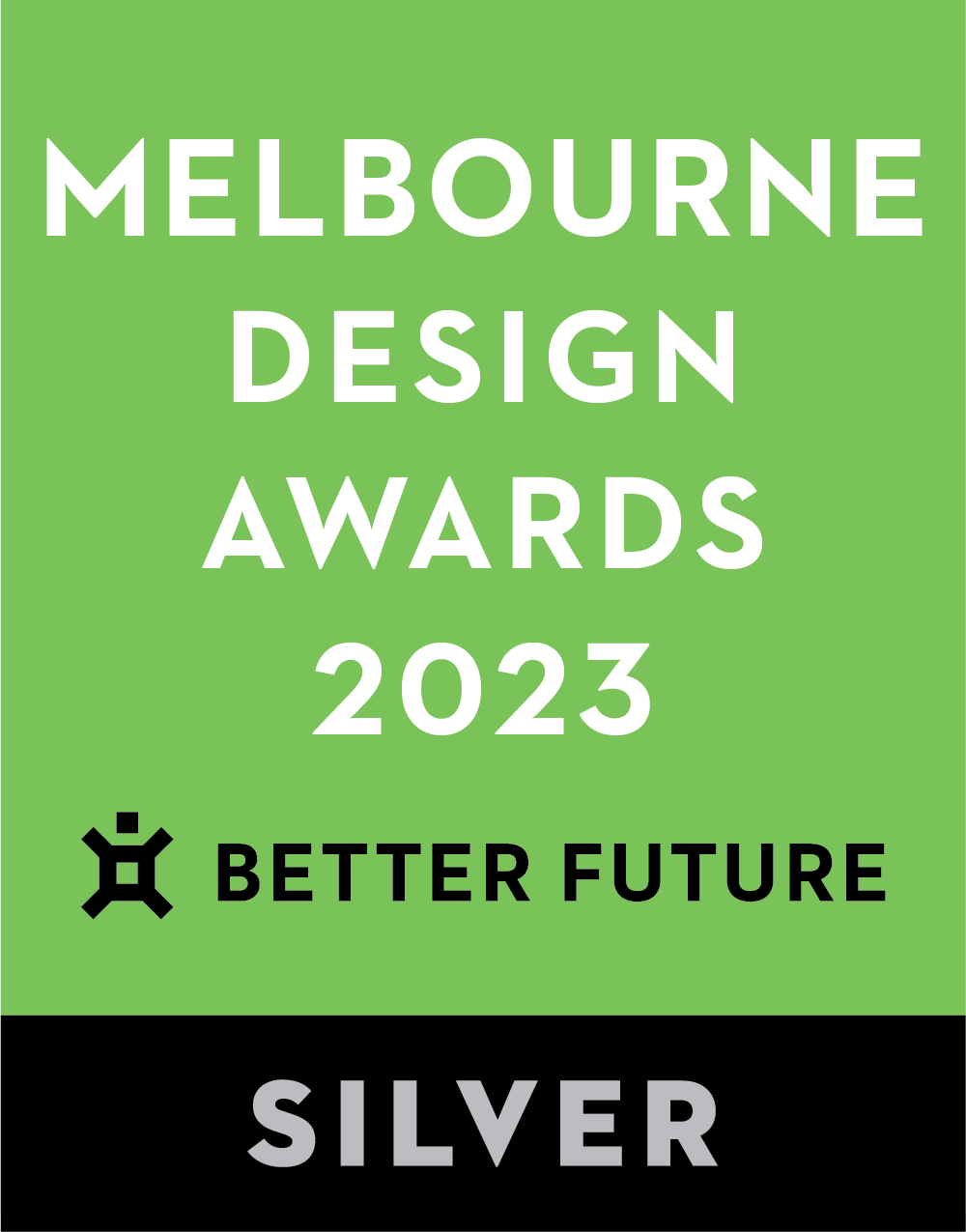









Image Credit : Matt C Photography
https://www.mattc.com.au/

Project Overview
Cleverly compact yet abundant with function, our Pascoe Vale Terraces in Melbourne’s north take a considered approach to higher density living in the suburbs. Our aim was to address the needs of the missing middle, by providing quality homes at a relatively affordable price point which could appeal to a broad demographic - from first home buyers and young families, to older downsizers seeking to retain a connected lifestyle.
Situated on a busy main road, the robust form and unassuming materiality of the buildings take a cue from its semi-industrial setting, and the proportions of neighbouring post-war houses. Comprising a series of four separate, but adjoining 3-storey terraces behind a brick fence, main volumes are visibly distinguished by material changes: clean white brick on the ground plane transitions into weatherboard and metal on upper floors. Rooflines recede from the street, creating a sensitive silhouette in step with its residential streetscape.
Project Commissioner
Project Creator
Team
Fletcher Hawkins
Diana Ruiz
Gaurav Rajadhyax
Project Brief
R ARCHITECTURE crafted this design for an established developer consortium with a predominant residential projects portfolio.
The project brief expected capitalising on the corner location of the site, and orientation, delivering efficiency of spaces and meeting the expectations of a varied resident demographic in this sough after pocket of Pascoe Vale. The houses were to be right-sized and designed with flexibility and suitability for owner-occupiers as well as renters.
With a track record of residential property development in the locality, the proponents wanted to create a housing product that balances aesthetics with practicality of living and is relatively affordable, while establishing a point of differentiation in the local property market.
Project Innovation/Need
These purpose-built dwellings represent a modern take on small footprint terrace housing, a historically significant typology in Melbourne. Confident forms protect the internal amenity of the dwellings with a close-knit buildscape, in hardy materials drawing on the language of its semi-industrial surroundings, establishing enduring quality from the outset.
Simple rectilinear pavilions are punctuated by strategically positioned windows and doors, which reduce visual bulk whilst providing select views out, and privacy within. Each home features its own street access and courtyard, with generous balconies extending the liveable footprint and reinforcing a connection to the bustling location. The resulting overhangs also partially shade external spaces on the ground floor, to encourage engagement with the outdoors
Inside, small yet generous living spaces are positioned to capture the highest possible daylight and cross-flow ventilation, while successfully shielding street noise and movement along Bell Street. Practical, thoughtfully composed living and kitchen spaces spill out onto terraces which allow for visual extension of these areas while keeping their cosy appeal. Dedicated study spaces enhance home amenity, supporting the increased fluidity of the post-covid workflow. The upper-level floor plate partially covers and frames terraces below, allowing more use of outdoor spaces, shading the living spaces below from the summer afternoon sun.
This unusual product typology has a unique response to its location, offering affordable, liveable, design-led homes to occupants, as well as an efficient solution to property developers, while successfully meeting council requirements for multi-residential living in a developing area.
Design Challenge
The complexity of multi-residential developments is always a balance between maximizing the sites potential and yield whilst satisfying council planning requirements. Situated on a 680sqm corner site, with constraints of 2 street setbacks, a drainage easement to the east and the need for site access to the south, results in a modest footprint. Each dwelling sits on a tiny footprint of 50-60 sqm, a vertical design response was essential in achieving the 4 townhouses, consisting 3-bedroom and 4-Bedroom homes. In order to appease Council, a high-quality architectural response was required to achieve a 3 storey sheer built form with upper-level overhangs.
Although a 3-storey form, critical design moves were made to break up the building mass. These include utilising large balconies to break the norther facade to appear as 4 individual metal pods on a brick podium. In addition to this raked roof forms help recess the top-level whist maintaining a clean architectural form. Large 2 storey cantilevers over the driveway help increase the building footprint requiring a clever and robust engineering solution to avoid the need for additional exposed structure resulting a sophisticated and simple built form.
Corner location, though beneficial from day lighting and street presence viewpoint, presented a great challenge in terms of noise management from busy Bell Street. Through close collaboration with acoustic consultants and some well-considered design detailing, we have been able to manage noise levels without compromising the indoor-outdoor fluidity of spaces.
Sustainability
Small footprint living aligns with our environmentally conscious design ethos, prioritising ‘must haves’ over ‘nice to haves’ to ensure there’s no unnecessary spaces. This has resulted in lower building costs and associated resources footprint. The money saved was then available for use in improving the quality of living and lifestyle that these homes can offer. The benefits are not just for the proponents. ‘Right sizing’ meant that the houses are relatively affordable to buy and with lower on-going costs of maintenance and energy bills.
Bulk of the finishes are locally sourced thus a relatively more reasonable carbon footprint of the building fabric.
All houses are fitted with solar heated water, and rain gardens to capture and reuse stormwater runoff. Large shrouds at each window portal provide ample shading, with operable windows to ensure effective ventilation, and easy passive thermal management throughout.
Well oriented terraces and balconies, good sized for day-to-day leisure. Nearby parks form an extension of the outdoor spaces for the residents, hence a great opportunity for socialising!
Architecture - Multi Residential - Constructed
This award celebrates the design process and product of planning, designing and constructing form, space and ambience that reflect functional, technical, social, and aesthetic considerations. Consideration given for material selection, technology, light and shadow.
More Details

